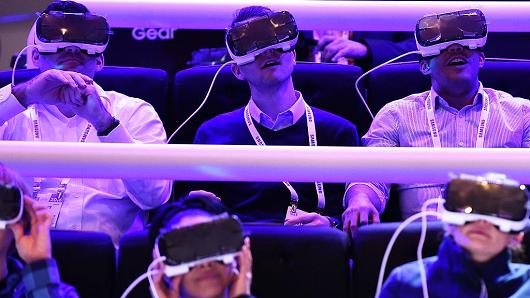The inventor of a shirt that contains 14 sensors and can track bodily movements in virtual reality (VR) is betting on so-called smart clothing to take off.
Japanese firm Xenoma has created a product known as the “e-skin” which links to smartphones via Bluetooth. When a smartphone powers a VR headset such as the Samsung GearVR, the e-skin can be recognized and is able to mirror a person’s motion within the VR experience.
Currently, body tracking in VR is very difficult because it requires cameras and sensors dotted around a room to accurately track motion.
“We can do the motion input for virtual reality, usually people use a camera but in our case we don’t need a camera,” Ichiro Amimori, CEO of Xenoma, told CNBC in a TV interview on Wednesday at the Consumer Electronics Show (CES) Asia, in Shanghai.
Currently, Xenoma is selling a $5,000 version of the e-skin that is aimed at developers to create apps on Microsoft’s Windows and Google’s Android operating systems. This will allow the apps to work on Samsung’s GearVR and also Google’s Daydream VR headsets.
While the price is high, Amimori is hoping to put a consumer version of the product on sale via a crowdfunding platform like Kickstarter which will be “cheaper than $500,” he said.
It’s not just gaming that this could be used for. Other use cases involve helping people going through rehab after a stroke to learn how to use certain body parts again.
But the VR market is still young with shipments of augmented and virtual headsets totaling just 10.1 million in 2016, according to research firm IDC. This could make such an expensive accessory tough to sell at the moment given the small audience, and already the large cost of purchasing a VR headset. However, shipments of such headsets are set to grow tenfold in 2021, potentially providing a large market.
At the same time, Amimori said the company is also working on a whole e-skin that contains a number of biometric sensors. These would allow the constant monitoring of bodily conditions such as heart rate.
“We can measure our heart, our wrist … our back, so we can cover our whole body with sensors,” Amimori said, adding that in two to three years, he is looking to launch a health-focused version of the e-skin.









